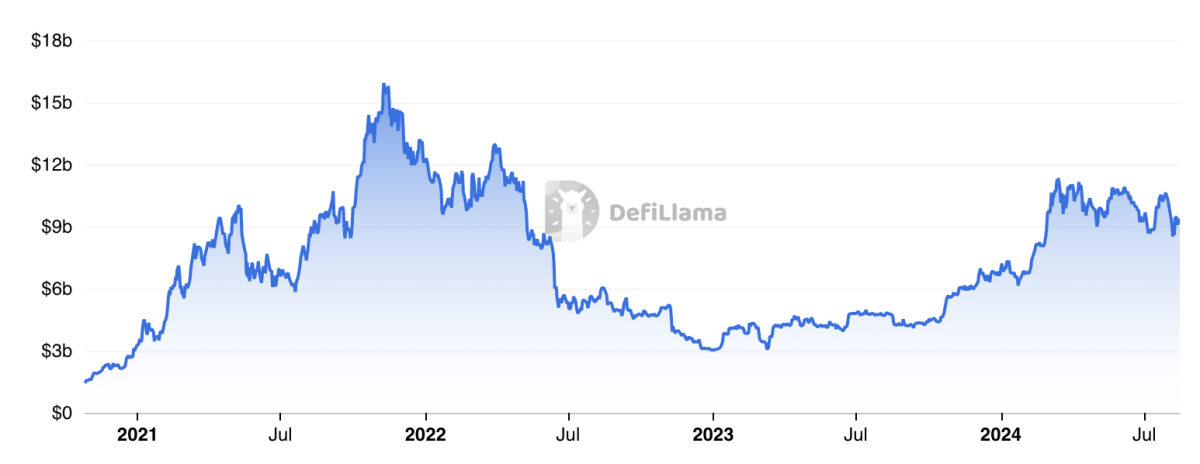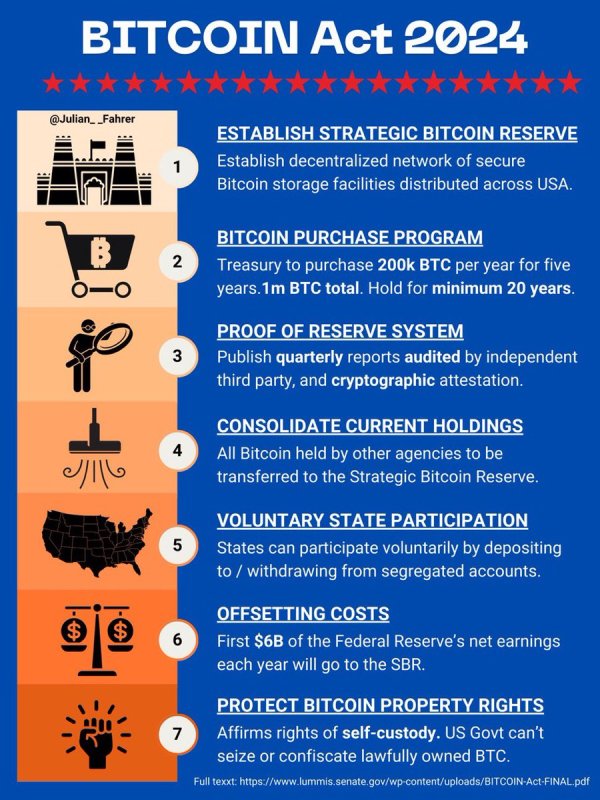Opinion
Crypto Behemoth Coinbase Enters The Bitcoin DeFi Arena
Published
3 months agoon
By
admin
A short and cryptic tweet sparked a frenzy in X circles late Tuesday night when leading global exchange Coinbase hinted at plans to enter the wrapped Bitcoin market. The initial speculation was quickly validated by senior employees who corroborated their excitement for further integration of the Bitcoin asset into the company’s on-chain ecosystem.
Other observers have highlighted the strategic nature of the decision following a tumultuous week for current market favorite, BitGo’s wBTC. The latter has long been regarded as the easiest and most popular method for Bitcoin investors to gain exposure to DeFi products.
With the industry’s attention on Bitcoin-native alternatives, the announcement is seen by many as a decisive move toward preserving Ethereum’s dominance as the de-facto Bitcoin DeFi layer.
The Origins Of Wrapped Bitcoin
To better understand the emergence and interest in wrapped Bitcoin products, one needs to rewind the clock to 2018 when the idea of DeFi was just starting to take off on Ethereum.
Looking to attract liquidity to their protocols, a collection of projects decided to set their focus on the most liquid asset on the market: Bitcoin. Loi Luu, one of wBTC’s original contributors, shared his perspective on the ordeal:
“We realized that to really help DeFi grow, we needed to bring Bitcoin liquidity into the ecosystem.”

As the old saying goes, the rest is history. In the middle of 2020, “DeFi summer” sparked a speculative craze that would lead the total value of deposits into wBTC north of $10 billion dollars. Today, a little over 150,000 bitcoins remain locked into its Ethereum contract, under institutional provider BitGo’s custody.
This custody, and the responsibility it necessitates, is the subject of the current controversy surrounding wBTC. Late last week, for example, BitGo revealed a new strategic partnership with Hong Kong-based BiT Global, looking to extend the wBTC product to a “multi-jurisdictional custody” setup. Behind BiT Global is infamous cryptocurrency founder Justin Sun.
The announcement saw blowback from users who claim the introduction of new actors into the custody arrangement is a miscalculated risk.
Dominos started falling the following day as community members from popular algorithmic stablecoin Maker began advocating for wBTC to be removed from the protocol’s collateral assets list as a safety measure. On Tuesday, BitGo founder Mike Belshe and representatives from Bit Global defended the decision on a public X Space.
While concerns voiced on social media have yet to put a material dent into wBTC’s deposits, they have opened the door for challengers. Despite BitGo’s long tenure in the space, it’s safe to wonder whether they’ve exhausted market participant’s confidence.
Earlier this year, a lawsuit from the company, spawned by a failed acquisition from Galaxy Digital, resurfaced as Delaware’s Supreme Court ruled the case should move forward.
A Challenge For Programmable Bitcoin Layers
For Coinbase, this foray into the wrapped asset business might be more than sheer opportunism. Analysts see a potential for the company to reinvigorate a stale product by hitching onto the popular Bitcoin DeFi narrative.
Based on research from BitcoinLayers, over 60% of the new proposed Bitcoin scaling protocols are advertised as replacements for Ethereum’s EVM (Ethereum Virtual Machine). Over the last year, excitement around those proposals has invited many to suggest they could steer users away from Ethereum towards Bitcoin, but most projects have failed to deliver much progress so far. Coinbase could be looking at an opportunity to nip future competition in the bud.
The company’s stake in the success of Ethereum has significantly increased since the launch of its native rollup implementation, BASE, late last year. While it’s fair to question what took them so long to compete with BitGo’s wrapped product, the ability to directly profit from the growing demand for on-chain Bitcoin speculation is likely the driving force behind the decision.
Coinbase recently reported revenues of nearly 20 million dollars from their BASE product in the last quarter alone.
Despite advertisements for more Bitcoin-native, trust-minimized, solutions, market participants have so far favored established institutional custodians like BitGo over more complex and economically volatile alternatives. Coinbase appears intent to double down on this approach by leveraging their existing moat in the custody business.
With the company already responsible for safekeeping the assets of major institutional holders such as Blackrock’s IBIT ETF, the proposed cbBTC product is expected to inspire even more trust from larger players than its predecessors.
The impact this could have on upcoming Bitcoin layers is significant. Coinbase is in a unique position to attract liquidity that will be challenging for smaller projects to rival. Their strongest argument will rest on the security of their bridging mechanism which remains a work-in-progress.
As noted by industry analyst Jacob Brown, this week’s announcement follows a series of moves by Coinbase showing a growing interest in the Bitcoin ecosystem.
Of course, the security trade-offs introduced by custodial products remain strongly criticized by technologists and promoters of more decentralized solutions, but the question remains as to whether or not market participants adhere to those principles.
Source link
You may like


Bitcoin Cash eyes 18% rally


Rare Shiba Inu Price Patterns Hint SHIB Could Double Soon


The Bitcoin Pi Cycle Top Indicator: How to Accurately Time Market Cycle Peaks


Bitcoin Approaches $100K; Retail Investors Stay Steady


Solana Hits New ATH On Huge Whale Accumulation, More Gains Ahead?


Microsoft Should Buy $78 Billion Worth of Bitcoin
Michael Saylor
Microsoft Should Buy $78 Billion Worth of Bitcoin
Published
7 hours agoon
November 22, 2024By
admin


As someone who has used Microsoft products my whole life, it pains me to see they are fumbling the bag on Bitcoin. The company’s $78 billion in cash reserves are losing value daily. Meanwhile, they stubbornly refuse to follow MicroStrategy’s proven winning strategy — convert those melting dollars to scarce Bitcoin!
Microsoft announced a couple of months ago that it would buy back shares up to $60 billion; it seems like this did nothing to increase the stock price. Imagine if they had bought Bitcoin instead. That money would have been much more powerful if allocated to Bitcoin. The company would likely have added hundreds of billions in market cap.
Just look at MicroStrategy. In just four years, they turned their $1 billion company into $100 billion by adopting Bitcoin as a treasury reserve asset. They are now the most compelling and successful story in corporate finance, with the best-performing stock in the last four years, beating every US company – even NVIDIA.
Yet Microsoft clings to an outdated financial strategy, destroying shareholder value. Microsoft should follow its technology instincts, not faulty financial logic. There is no long-term viability in holding cash.
I was listening to X Spaces yesterday, during which MicroStrategy’s CEO Michael Saylor revealed that he offered to explain Bitcoin’s benefits privately, but Microsoft’s CEO Satya Nadella rejected the meeting. Now, he is making a last-ditch appeal by presenting a 3-minute Bitcoin proposal to Microsoft’s board.
Earlier, the board already advised shareholders to reject assessing Bitcoin’s potential upside. Nonetheless, I am interested to see how this meeting will turn out. Saylor is a great educator, so you never know.
They should realise that no corporate treasury asset like Bitcoin can enhance enterprise value. Even a small $5 billion Bitcoin allocation could add tens of billions in market cap.
Look, Microsoft, the choice is clear – hoard melting dollars or embrace uncensorable digital gold. Your shareholders are begging you to buy Bitcoin. It’s time to listen before that $78 billion completely disappears. This is your fiduciary duty as Bitcoin continues mass adoption.
This article is a Take. Opinions expressed are entirely the author’s and do not necessarily reflect those of BTC Inc or Bitcoin Magazine.
Source link
$100
Bitcoin Nears $100,000 As Trump Council Expected To Implement BTC Reserve
Published
11 hours agoon
November 22, 2024By
admin

What an enormous day it has been today.
Gary Gensler officially announced that he is stepping down from his position as Chairman of the Securities and Exchange Commission (SEC), and minutes later, Reuters reported that Donald Trump’s “crypto council” is expected to “establish Trump’s promised bitcoin reserve.” A bitcoin reserve, that would see the United States purchase 200,000 bitcoin per year, for five years until it has bought 1,000,000 bitcoin.

Right after both of those, Bitcoin continued its upward momentum and broke $99,000, with $100,000 feeling like it can happen at any second now.
It is hard to contain my bullishness thinking about the United States purchasing 200,000 BTC per year. They essentially have to compete with everyone else in the world who is also accumulating bitcoin and attempting to front run them. There are only 21 million bitcoin and that is a LOT of demand.
To put this into context, so far this year the US spot bitcoin ETFs have accumulated a combined total of over 1 million BTC. At the time of launch the price was ~$44,000 and now bitcoin is practically at $100,000. And that’s all ETFs combined. Imagine what will happen when just one entity wants to buy a total of 1 million coins, having to compete with everyone else accumulating large amounts as well?
I mean MicroStrategy literally just completed another $3 BILLION raise to buy more bitcoin, and will continue raising until it purchases $42 billion more in bitcoin. The United States are most likely going to be purchasing their coins (if this legislation is officially signed into law) at very high prices. The demand is insane and only rising in the foreseeable future.
With two months left to go until Trump officially takes office, it remains to be seen if this bill becomes law, but at the moment things are looking really good. As Senator Cynthia Lummis stated, “This is our Louisiana Purchase moment!” and would be an absolutely historic moment for Bitcoin, Bitcoiners, and the future financial dominance of the United States of America.
This is the solution.
This is the answer.
This is our Louisiana Purchase moment!#Bitcoin2024 pic.twitter.com/RNEiLaB16U
— Senator Cynthia Lummis (@SenLummis) July 27, 2024
This article is a Take. Opinions expressed are entirely the author’s and do not necessarily reflect those of BTC Inc or Bitcoin Magazine.
Source link
Bitcoin Policy
Want Greater Bitcoin Adoption? Engage With Your Government.
Published
15 hours agoon
November 21, 2024By
admin

It’s been a good week for Bitcoin and its status in the eyes of federal deposit insurance corporations. (Well, there’s a weird sentence I never thought I’d write.)
On Tuesday, the anti-crypto U.S. Federal Deposit Insurance Corporation (FDIC) Chairman, Martin Gruenberg, announced he’d be stepping down in January.
And yesterday, Heritage Falodun, CEO of DigiOats, Nigeria’s leading Bitcoin education and consultancy platform, educated members of the Nigeria Deposit Insurance Corporation (NDIC) about the benefits of bitcoin and other digital assets.
Falodun, an indefatigable Bitcoin proponent, spearheaded a seminar for the NDIC entitled “Cryptocurrency in the Evolving Financial Industry”.
This week, @DigiOats alongside with #MassCyberTech completed a groundbreaking seminar for @NDICNigeria 🇳🇬on “Cryptocurrency in the Evolving Financial Industry”. We explored #Bitcoin adoption, regulation, and sustainable finance marking a key moment for Nigeria’s financial future pic.twitter.com/hpWQOqZt8L
— DigiOats⚡️ (@DigiOats) November 21, 2024
In it, he highlighted the following points:
- Bitcoin can serve as a reserve asset for nation states, including Nigeria
- Using bitcoin (and other digital assets), banks can reduce settlement time
- Bitcoin can reduce capital controls, as its censorship resistant
Falodun and his team also provided an overview on the evolution of money and financial systems and also touched on the ways in which bitcoin and crypto are already integrated into traditional financial structures in efforts to convince the NDIC of Bitcoin and crypto’s importance.
“Nigeria must adopt balanced regulations that protect citizens and foster innovation,” Falodun told Bitcoin Magazine. “By embracing Bitcoin’s uniqueness and engaging the Bitcoin community, Nigeria can lead the global financial revolution.”
Falodun knows that without properly educating government officials, Bitcoin runs the risk of being misunderstood and, therefore, regulated improperly.
“I would like regulators to understand that Bitcoin’s decentralized nature is not a flaw to be regulated out of existence, but a feature that offers unprecedented opportunities for inclusion, economic freedom and optimization of financial rails,” he added.
I respect Falodun’s efforts.
Before you go calling me a statist or some other silly reductive term, I’d like to remind you that even well-known cypherpunks like Adam Back have said that part of the struggle around greater Bitcoin adoption (and encryption in general) will include engaging with governments (and courts).
Proponents of Bitcoin should acknowledge our current political reality and make the case for Bitcoin to those in power if they want to see it flourish — or if they want to at least stop governments from crafting poor policy around Bitcoin and/or attacking the industry.
Take a cue from Falodun and do your part to educate local government officials, members of state-level administrative agencies or even Federal-level bureaucrats about Bitcoin.
It’s one of the most important things you can do to keep your country from falling behind.
Source link

Bitcoin Cash eyes 18% rally

Rare Shiba Inu Price Patterns Hint SHIB Could Double Soon

The Bitcoin Pi Cycle Top Indicator: How to Accurately Time Market Cycle Peaks
Bitcoin Breakout At $93,257 Barrier Fuels Bullish Optimism

Bitcoin Approaches $100K; Retail Investors Stay Steady

Solana Hits New ATH On Huge Whale Accumulation, More Gains Ahead?

Microsoft Should Buy $78 Billion Worth of Bitcoin

Ethereum Believers May Be Staring Down Opportunity As ETH Reaches Another Low Against Bitcoin: CryptoQuant CEO

UK government is ready for crypto regulations next year

“Crypto Dad” Chris Giancarlo Emerges Top For White House Crypto Czar Role

Bitcoin Nears $100,000 As Trump Council Expected To Implement BTC Reserve

Know Your Missiles: Russia’s Experimental Hypersonic Missile Is A New Kind of Killing Machine

Polkadot investor predicts a 30,000% rally for this $0.04 token by 2025

Donald Trump Proposed Crypto Advisory Council To Set Up Strategic Bitcoin Reserve

Want Greater Bitcoin Adoption? Engage With Your Government.
182267361726451435

Top Crypto News Headlines of The Week

Why Did Trump Change His Mind on Bitcoin?

New U.S. president must bring clarity to crypto regulation, analyst says

Ethereum, Solana touch key levels as Bitcoin spikes

Bitcoin Open-Source Development Takes The Stage In Nashville

Will XRP Price Defend $0.5 Support If SEC Decides to Appeal?

Bitcoin 20% Surge In 3 Weeks Teases Record-Breaking Potential

Ethereum Crash A Buying Opportunity? This Whale Thinks So

Shiba Inu Price Slips 4% as 3500% Burn Rate Surge Fails to Halt Correction

‘Hamster Kombat’ Airdrop Delayed as Pre-Market Trading for Telegram Game Expands

Washington financial watchdog warns of scam involving fake crypto ‘professors’

Citigroup Executive Steps Down To Explore Crypto
Mostbet Güvenilir Mi – Casino Bonus 2024

Bitcoin flashes indicator that often precedes higher prices: CryptoQuant
Trending

 2 months ago
2 months ago182267361726451435

 24/7 Cryptocurrency News3 months ago
24/7 Cryptocurrency News3 months agoTop Crypto News Headlines of The Week

 Donald Trump4 months ago
Donald Trump4 months agoWhy Did Trump Change His Mind on Bitcoin?

 News3 months ago
News3 months agoNew U.S. president must bring clarity to crypto regulation, analyst says

 Bitcoin4 months ago
Bitcoin4 months agoEthereum, Solana touch key levels as Bitcoin spikes

 Opinion4 months ago
Opinion4 months agoBitcoin Open-Source Development Takes The Stage In Nashville

 Price analysis3 months ago
Price analysis3 months agoWill XRP Price Defend $0.5 Support If SEC Decides to Appeal?

 Bitcoin4 months ago
Bitcoin4 months agoBitcoin 20% Surge In 3 Weeks Teases Record-Breaking Potential



